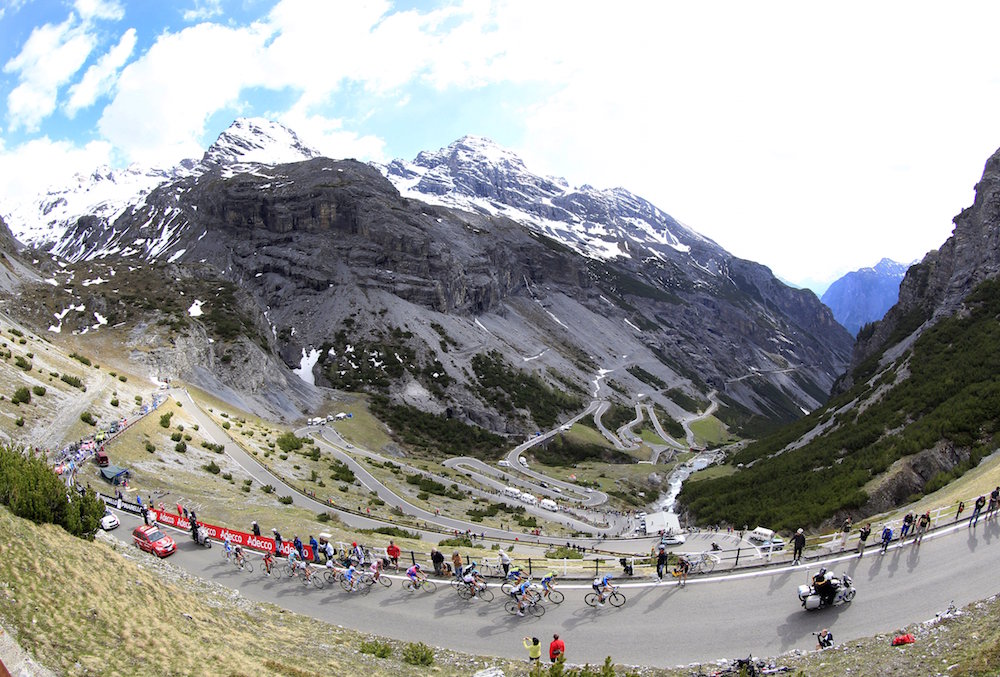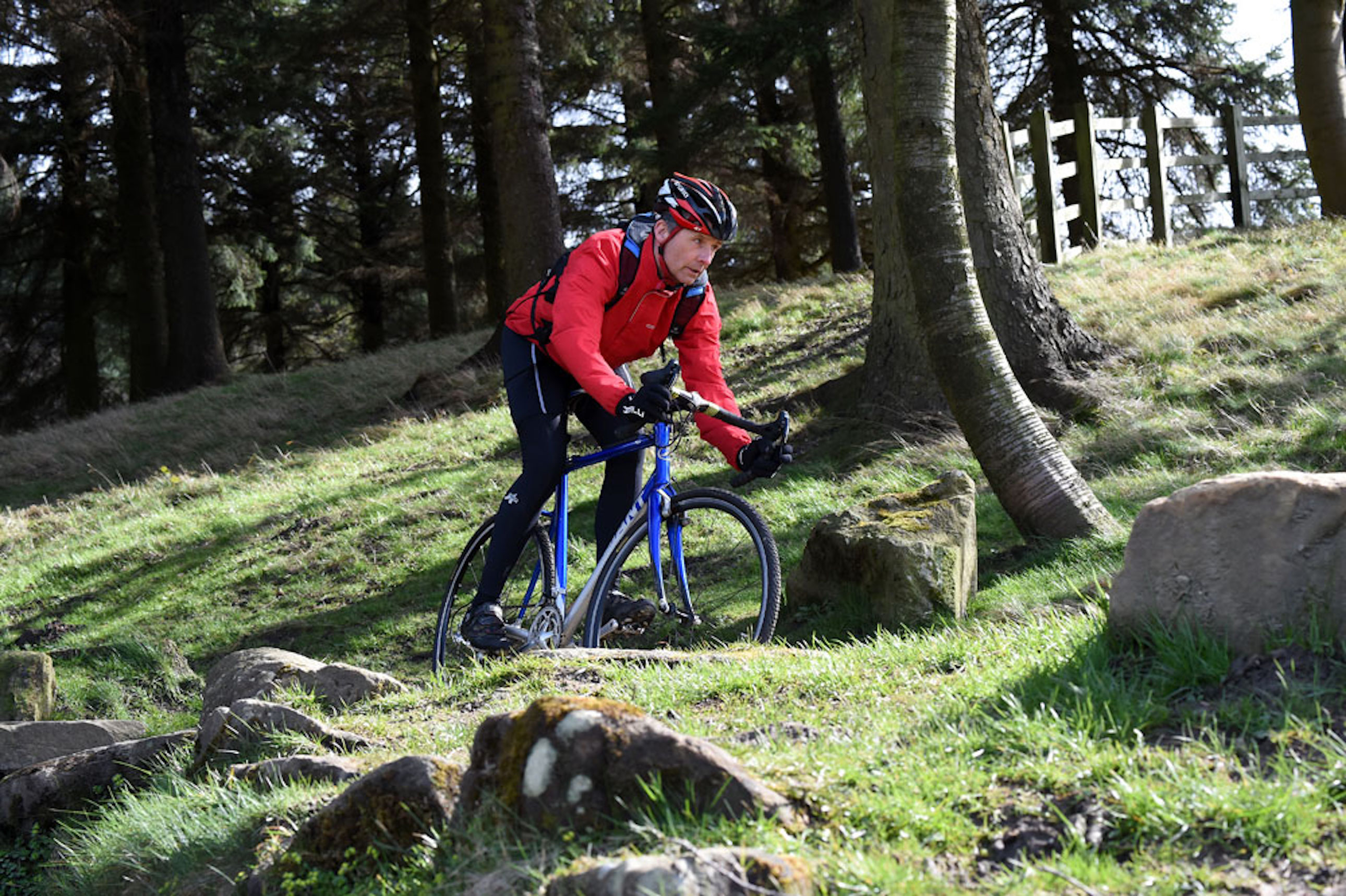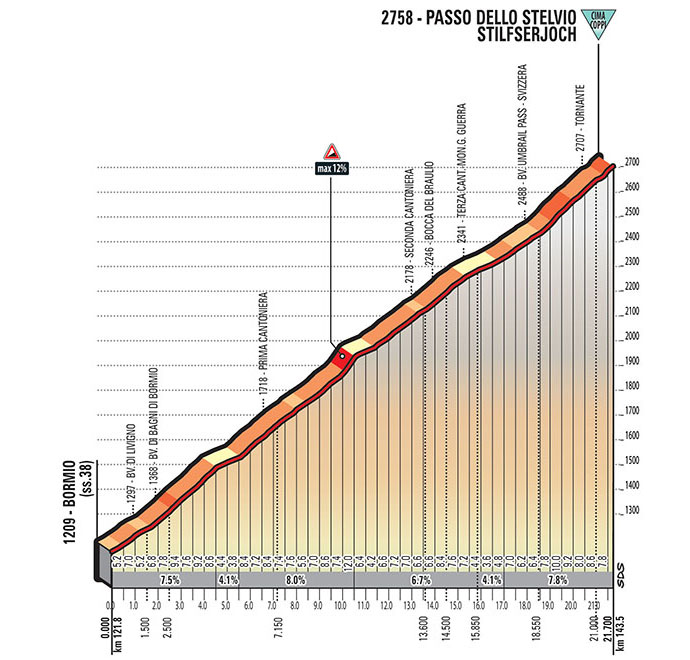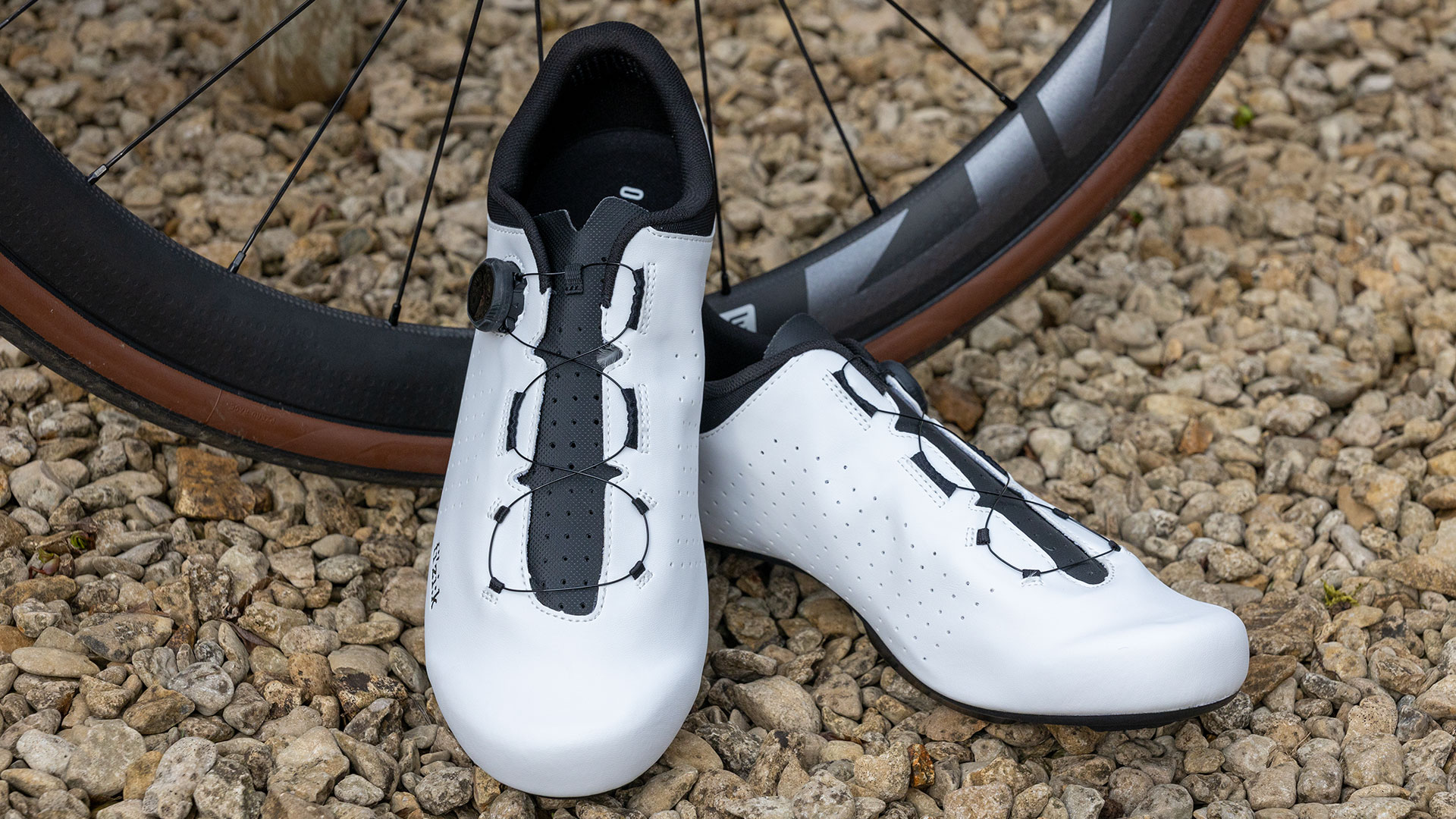Icons of cycling: Passo dello Stelvio
Chris Sidwells looks at one of the most famous climbs in the Giro d’Italia

The Maglia Rosa group climbs the Stelvio on stage twenty of the 2012 Giro d'Italia (Watson)

Staggering, amazing, breathtaking. Stand at the summit of the Stelvio and the superlatives tumble into your brain.
The Passo dello Stelvio is a civil engineering triumph, a ribbon of tarmac 48km long that uses almost 70 hairpin bends to soar 2,757m into the sky and back down again.
>>> Icons of cycling: The Cima Coppi
It was created between 1820 and 1825 so Austria could control Lombardy, its imperial foothold in Italy. You still see the words ‘Stilfser Joch’, the Stelvio’s Austrian name, on maps and on some signposts.
The nearby Dreisprachenspitze mountain represents the old meeting point of three languages: Italian, Swiss Romansh and German.
Revolution and war gradually pushed Austria north, and now the Stelvio is totally in Italy, connecting the Valtellina in the south-west with the Val Venosta in the north-east.
Today the Stelvio is no longer the important link it once was. Heavy transport and those in a hurry use quicker, easier alternatives, but up until 1959 the Stelvio was vital, and it was kept open all year round.
Get The Leadout Newsletter
The latest race content, interviews, features, reviews and expert buying guides, direct to your inbox!

That required a huge effort, with large amounts of manpower and 20 stations where horses could be changed, because goods and people had to be dragged over the top on sledges during the winter.
The Stelvio was introduced to cycling in the 1953 Giro d’Italia. The riders climbed the north-east side, Stelvio’s toughest, on the penultimate day, and the great Fausto Coppi dominated.
The north-east ascent starts in Prato allo Stelvio, the south-west in Bormio, and there is a third way up from Switzerland, using Passo Umbrail, which joins the south-western ascent three kilometres below the Stelvio’s summit.
The climb is tough whichever way, and the Stelvio’s famous hairpin bends create an added difficulty. There are 20 on the south-western ascent and 48 on the other side. Most of them are quite flat, but have steep ramps between them, making a mockery of average gradient figures.
From the top, coil after coil of hairpins flow down the long valley to the north- east.
This side of the Stelvio has seen most racing action: Coppi in 1953, and Charly Gaul in 1961; Jose-Manuel Fuente and Francisco Galdós trying to batter Eddy Merckx into submission in 1972; and two Frenchmen from the same team, Bernard Hinault and Jean-René Bernaudeau, who out-raced everyone here to take the 1980 Giro for Hinault.
Stelvio Pass: a Giro d'Italia fan's guide
The Stelvio Pass is one of Italy's most iconic climbs, and as a result it's played a major part in the Giro d'Italia over the years.
In the 2017 edition of the race, the climb features in stage 16, on Tuesday, May 23. With the riders now into the third week of racing, the pressure will be on for the true climbers to clamber up the GC with a good result. One rider likely to be pivotal in the stage will be Nairo Quintana - the Columbian has made the race lead a goal of his, yet currently sits in second, 2-41 behind leader Tom Dumoulin.
Here's a our quick guide to the iconic climb.
- 1825: Lo Passo dello Stelvio, or the Stelvio Pass opened because Austria's Franz Joseph I wanted a way from Vienna to Milan. It remained open year-around through 1915. Workmen who lived in houses distributed on the road kept it clean. Now, and since the WWI, the pass remains closed in the winter.
- 2758: Elevation at pass. From Bormio the road switches back on itself 36 times. From the classic side, the one used in 1953, there are 48 times tornati or switchbacks.
- 1953: Organiser RCS Sport first used the pass. Fausto Coppi drop race leader Hugo Koblet on the climb and took the pink jersey in Bormio. He won the race the next day in Milan.
- 1975: The race finishes at the top of the pass. Spain's Francisco Galdós won the stage and Italian Fausto Bertoglio took the overall title.
- 4: Number of times pass used as a stage finish. Graziano Battistini won in 1965, José Manuel Fuente in 1972, Francisco Galdós in 1975, Thomas De Gendt in 2012. With the four finishes included, the race visited the Passo dello Stelvio 11 times.
- 1967, 1984, 1988 & 2013: Pass cancelled due to snow.
- 2014: The organiser takes the race over the Stelvio and Gavia passes, the first time it included both in one stage
- 2017: Stelvio appears mid-way in stage 16 of the 2017 Giro d'Italia route

Thank you for reading 20 articles this month* Join now for unlimited access
Enjoy your first month for just £1 / $1 / €1
*Read 5 free articles per month without a subscription

Join now for unlimited access
Try first month for just £1 / $1 / €1

Chris has written thousands of articles for magazines, newspapers and websites throughout the world. He’s written 25 books about all aspects of cycling in multiple editions and translations into at least 25
different languages. He’s currently building his own publishing business with Cycling Legends Books, Cycling Legends Events, cyclinglegends.co.uk, and the Cycling Legends Podcast
-
 Man hands himself in to Belgian police after throwing full water bottle at Mathieu van der Poel during Paris-Roubaix
Man hands himself in to Belgian police after throwing full water bottle at Mathieu van der Poel during Paris-Roubaix30-year-old was on Templeuve-en-Pévèle cobbled sector when television pictures showed the bottle hitting him in the face
By Tom Thewlis Published
-
 Fizik Vento Omna Wide shoe review: Yeti sneakers for those pedalling on a budget
Fizik Vento Omna Wide shoe review: Yeti sneakers for those pedalling on a budgetBroadly recommended for those of us with flipper feet
By Simon Fellows Published